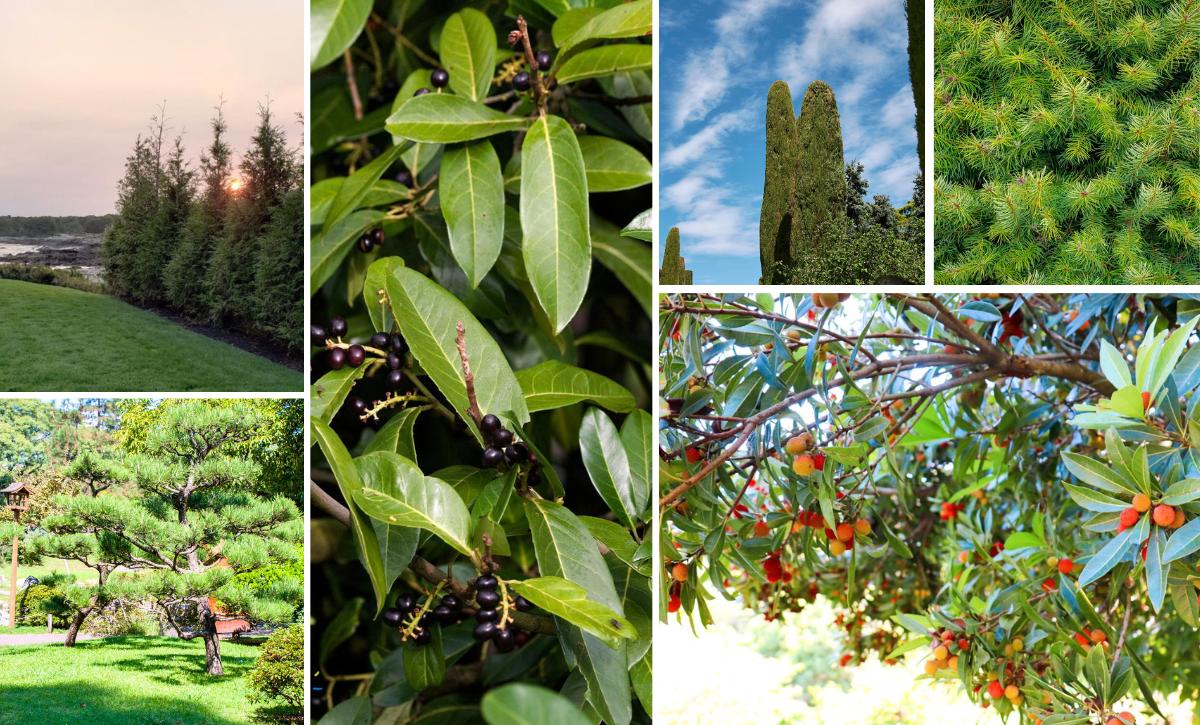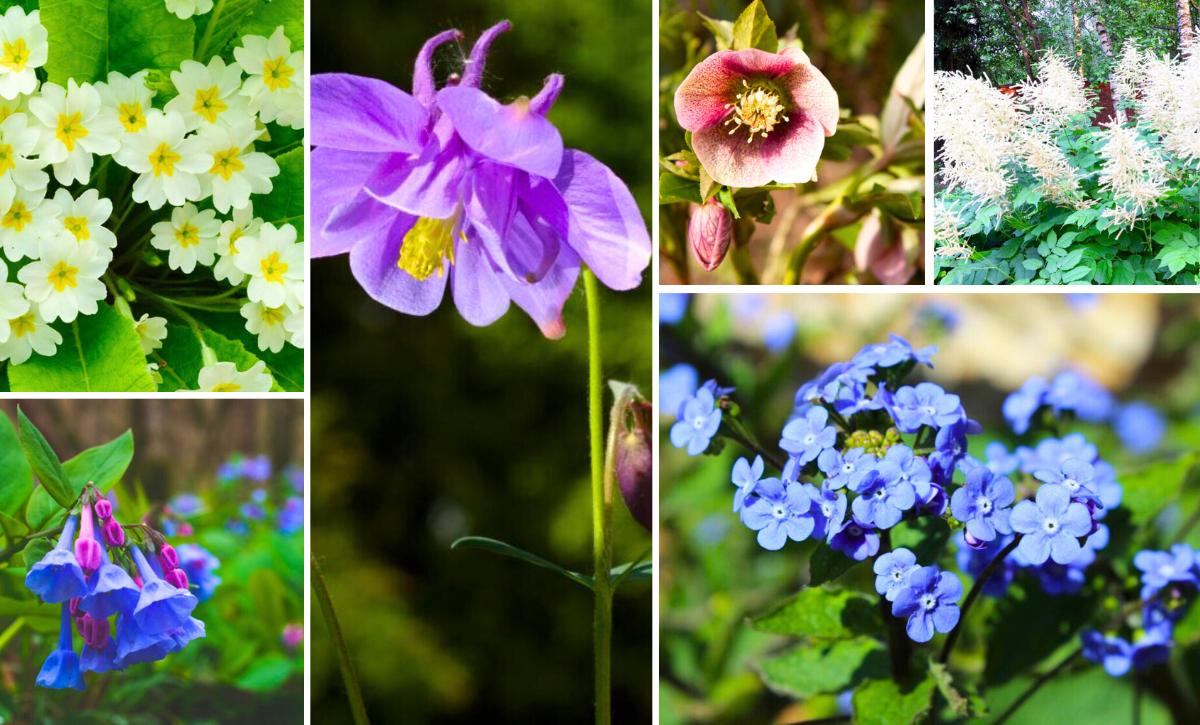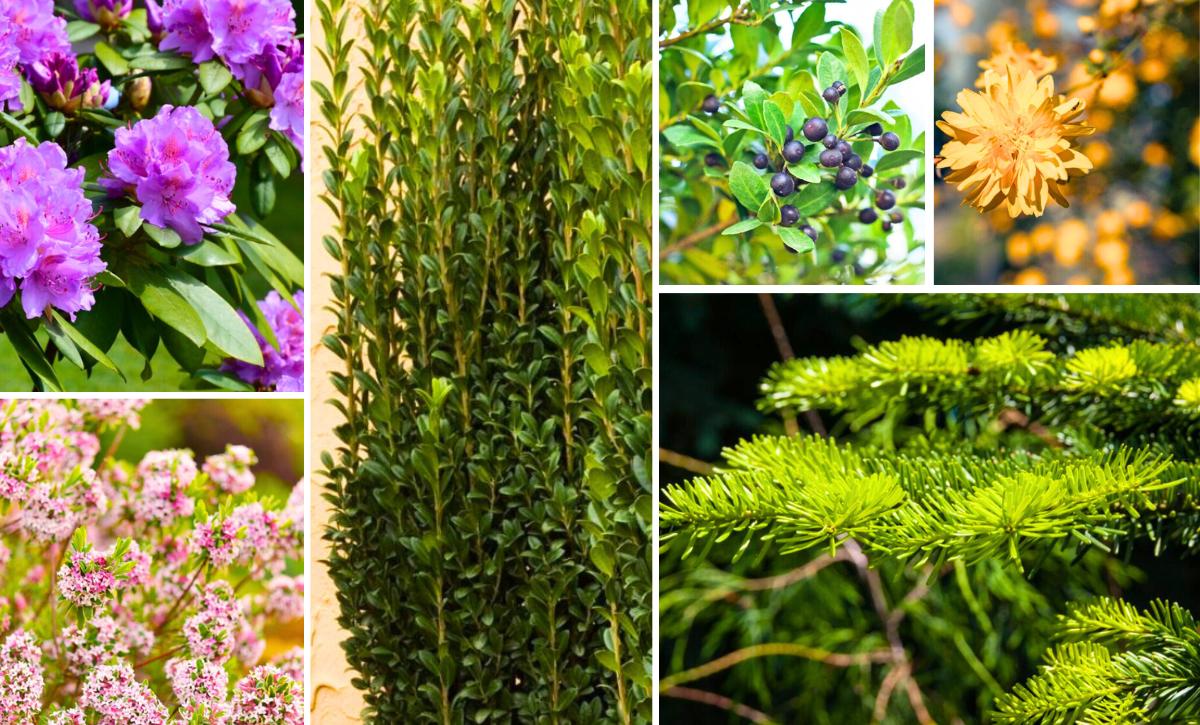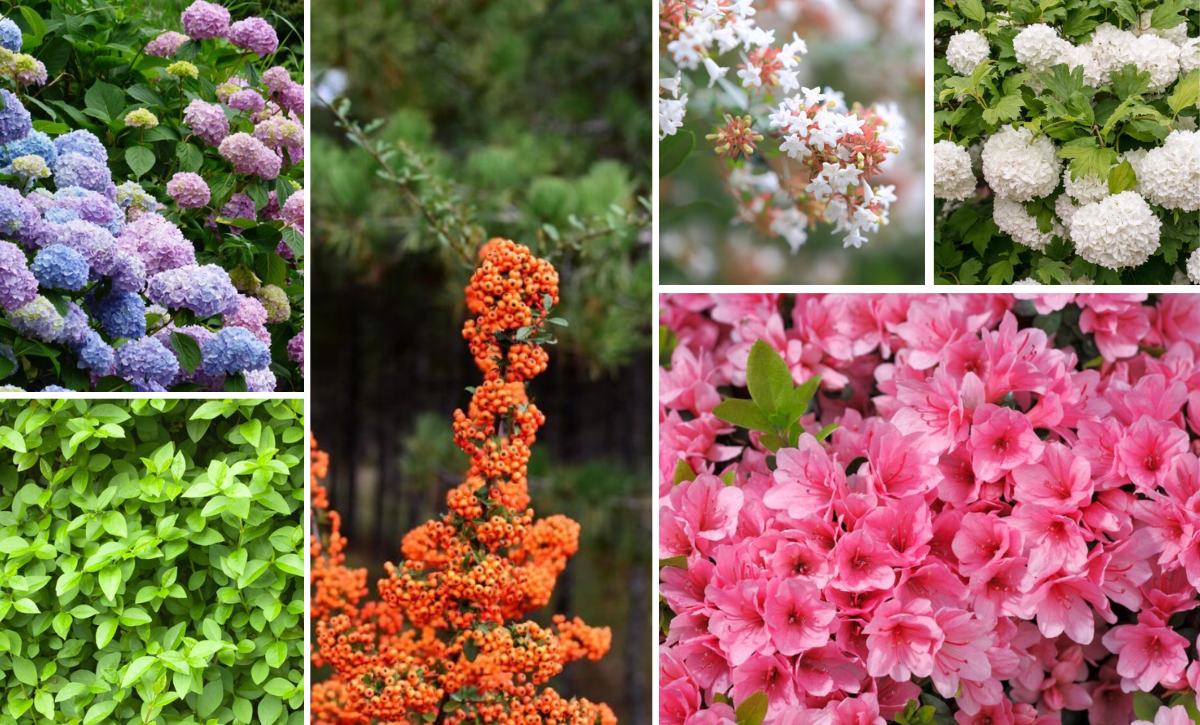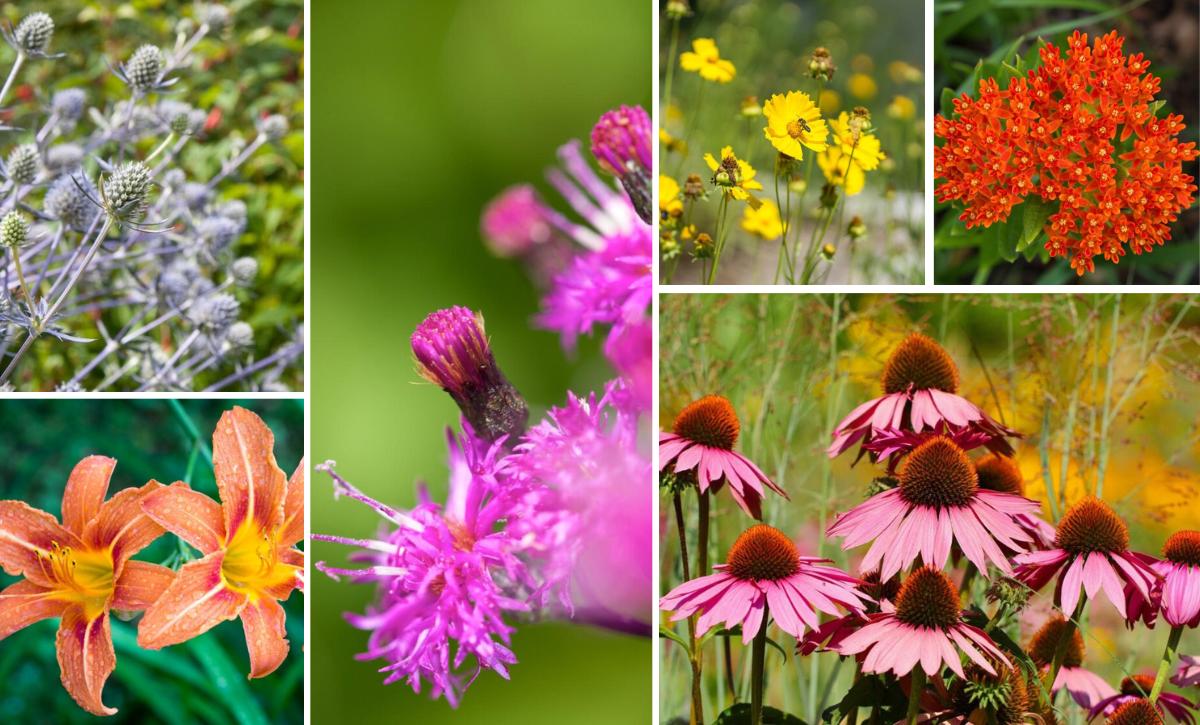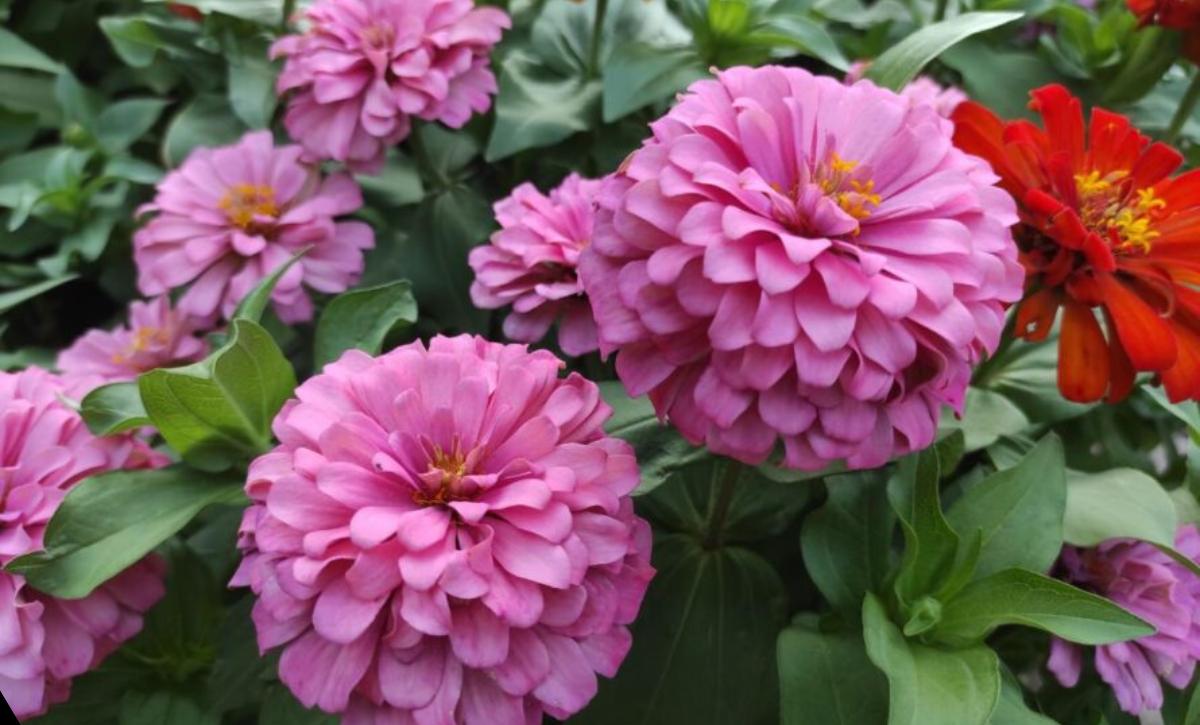The creeping thyme is a perennial plant that most gardeners use as ground cover for sunny regions in their gardens. The plant’s striking purple color lights up any garden that you plant it in.
The creeping thyme was named due to its movement characteristics. This is one of the main things that makes gardeners suspect creeping thyme as an invasive plant that will smother other plants.
Even though creeping thyme has peculiar growth habits, this doesn’t mean they are invasive plants.
Let’s dive into more details regarding the creeping thyme!
Is Creeping Thyme Invasive?

We must first study creeping thyme’s growth habits to answer this question. Creeping thyme is a fast grower and will spread throughout the garden once you plant it. Creeping thyme spreads by extending runners along the ground or through roots under the ground.
The creeping thyme only grows up to 2 inches tall, so you won’t necessarily need to mow it. However, you have to prune it from time to time for it to maintain its shape.
One thing that makes creeping thyme favorable is its tolerance to foot traffic. As such, it’s an excellent choice for folks with pets and kids. Furthermore, the plant has a fantastic scent that’s sure to please your nose.
Now, let’s answer the question: is creeping thyme invasive?
The answer is no. Creeping thyme will fastly spread throughout your garden but won’t interfere with other plants. It serves as a beautiful ground cover as well as a garden perfume with its lovely scent!
All the Relevant Information About Creeping Thyme
Known by its scientific name Thymus serpyllum, creeping thyme is a perennial plant member of the mint family Lamiaceae. A perennial plant means a plant that grows back every year.
Creeping thyme has a similar fragrance to the thyme, and people actually use it for cooking! This is another benefit you get from the plant, on top of it being an excellent ground cover.
Creeping thyme produces flowers of different colors. Most species have purple or pink flowers, but you may find other species with white flowers. These serve as a significant contrasting element in your garden.
The plant usually grows in USDA zones 4 – 9. However, this may vary depending on the species.
The plant’s flowers are also popular with butterflies, especially the giant blue butterfly and the small blue butterfly, which lay eggs in their flowers. They act as breeding grounds for more butterflies.
Creeping thyme will alleviate the look of your stepping stones, walkways, and rock garden. You can also use it as a garden border since they act as rabbit and deer deterrents.
Planting Creeping Thyme
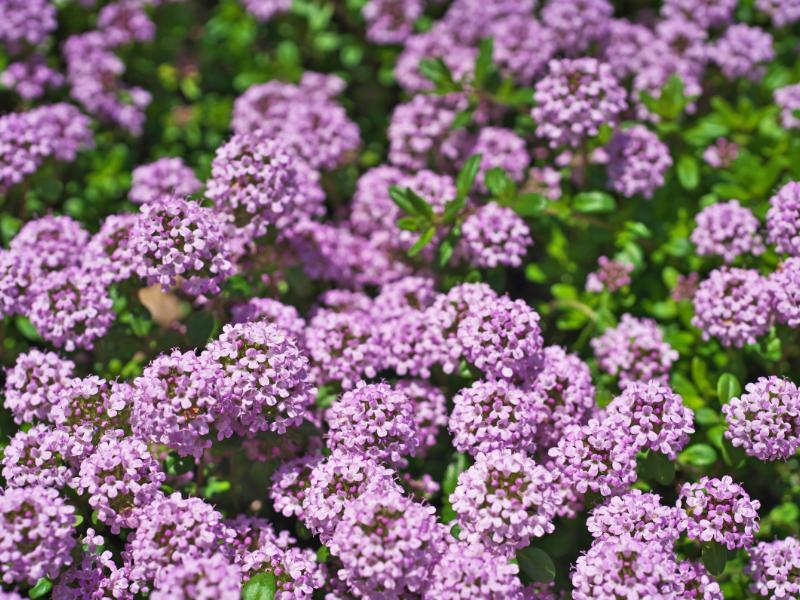
Creeping thyme prefers loamy, nutrient-rich, and well-draining soil to thrive. Nonetheless, the plant can still grow in different soil types, including rocky and sandy soil. Creeping thyme loves alkaline soil, so ensure you review the pH levels of your medium before planting.
You can use either cuttings or seeds to grow your creeping thyme.
The best time to take cuttings for planting is during early summer. On the other hand, seeds would be best grown indoors first during early spring.
Wait for the seeds to sprout, then transplant your creeping thyme to your garden. Do this when the last frost date has passed.
Growing Creeping Thyme
Creeping thyme is a low-maintenance, hardy plant that doesn’t need much of your care, especially when grown in a suitable climate.
Have a look at the general information below, and continue reading to acquire more knowledge on how to take care of the creeping thyme!
| Common Name: | Creeping thyme |
| Botanical Name: | Thymus serpyllum |
| Family: | Lamiaceae |
| Plant Type: | Perennial, herbaceous |
| Sun Exposure: | Full |
| Mature Size: | 2-6 inches tall, 6-8 inches wide |
| Soil pH: | Alkaline, Neutral |
| Soil Type: | Well-draining, sandy |
| Flower Colors: | Purple, white, pink |
| Bloom Time: | Summer |
| Hardiness Zones: | 4-9 USDA |
| Native Area: | Europe |
Light Requirements
Creeping thyme native habitat lies in the Mediterranean regions, where they are exposed to sunlight the whole day. That’s why many people like to use them as ground covers.
If you want to plant this plant, you should definitely choose a part of your garden that receives a lot of sunlight. However, the plant will still grow well if your garden isn’t fully exposed to the sun but has some partial shade.
Soil Requirements
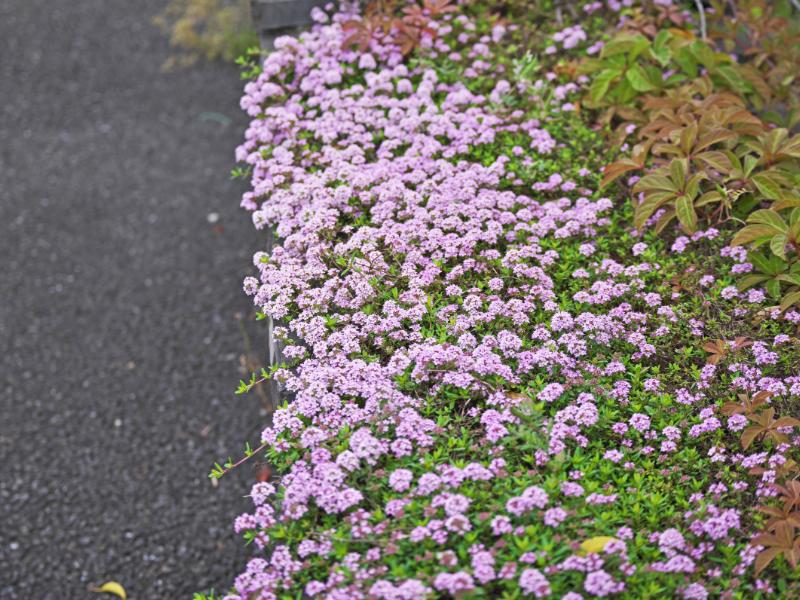
As we discussed earlier, creeping thyme requires a loose, well-draining medium. You can plant them in sand, loam, or rocky soil.
These plants flourish best in dry soil. They do not at all like wet soil! They can also grow in poor soil, but it goes without saying they would be better off in nutrient-rich soil.
Water Requirements
Creeping thyme, when new and young, will need constant watering. You have to wait until the plants are mature before you start enjoying their drought tolerance.
It would be best to water your plants once every ten days as they grow. This lets the soil completely dry before your next watering, promoting growth.
Overwatering these plants on a continuous basis will lead to soggy soil and eventually cause root rot. This fungal disease is dangerous and can completely destroy your progress.
Fertilizer Requirements
Creeping thyme doesn’t necessarily need feeding when grown in well-prepared soil. Still, consider giving your plants a slow-release fertilizer as they begin to grow.
This will enable the nutrients to be constantly released throughout the growing season while encouraging flowering and lush foliage.
Always follow the package’s instructions on the amount of fertilizer needed. Too much fertilizer is harmful to your plant since it will burn the plant’s roots.
Temperature Requirements
As mentioned earlier, the best time to transplant these plants is after the last frost date, in early summer or late spring. This is because they are not frost-hardy. But after successfully transferring them outside, they will grow and spread relatively fast.
Temperatures during this time typically range from 68-86℉, which is very favorable for creeping thyme.
In case the temperature falls down, don’t worry! Just add some mulch to shield your plant from the temperature change.
Humidity
Although creeping thyme originates from humid regions, they actually don’t like humidity much.
The flowers and leaves of creeping thyme can easily be harmed in a humid environment. One way to prevent your plant from coming into contact with wet soil is by adding gravel or sand at the base of your plant. Any affected plants will recover once the weather returns to normal.
Pruning Creeping Thyme
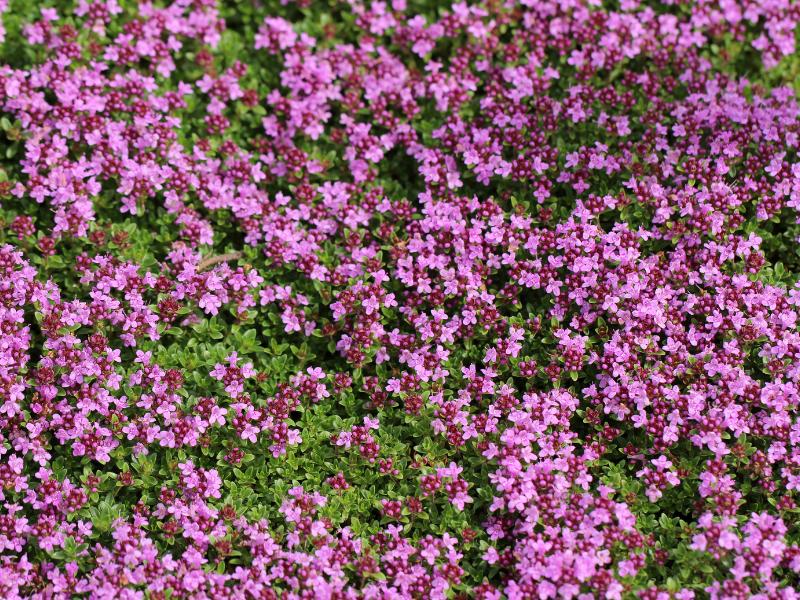
You will have to prune this plant; there’s no way around it! But, at least you won’t have to mow it. That’s some good news, right?
Creeping thyme needs frequent pruning to maintain its nice and tidy look.
During early in the spring, prepare creeping thyme for the upcoming growing season by trimming back the plant’s stems. During the end of summer, prune once again after its flowers have died down.
In the late fall, after the first frost, cut the lengthy, woody stems in half. Pruning is an excellent way to promote plant growth, especially during spring.
9 Different Varieties of Creeping Thyme
The different species of creeping thyme are more or less the same. The only thing that differs is their foliage and flowers.
The following section will feature 9 different varieties of creeping thyme you can delight your garden with!
1. Red Creeping Thyme
Scientifically known as Thymus serpyllum’ Coccineus,’ the red creeping thyme boasts magenta blooms that make a focal statement. This variety grows relatively flat and spreads quickly.
The red creeping thyme can reach a diameter of 18 inches and does well in rocky soil.
2. “Spicy Orange” Creeping Thyme
The “Spicy Orange” has pink flowers and resembles carpet flowers. This variety doesn’t offer a better groundcover effect compared to other types of creeping thyme.
It scarcely spreads to a diameter of 10-12 inches and is one of the smallest cultivars.
3. White Creeping Thyme
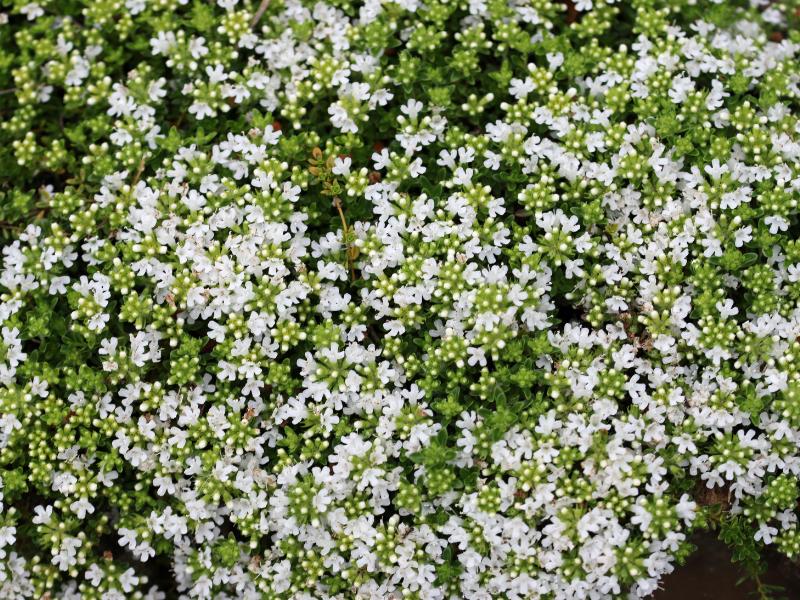
White creeping thyme, also called Thymus paocos “Albiflorus,” has a carpet-like structure and white-scented blooms. They are tougher than other creeping thyme varieties and can grow in USDA hardiness zone 2. They grow between 1-2 inches above the surface.
4. Pink Chintz
Pink Chintz belongs to the genus Thymus Serpyllum and features salmon-pink flowers and wooly green foliage. It is a compact plant with thick stems and blooms every year during the middle of spring. The plant spreads swiftly and can reach a diameter of 24 inches.
5. Wooly Thyme
Also called Thymus pseudolanuginosus, the Wooly thyme features light pink blooms and spiral-shaped silver-green leaves. This variety is drought-resistant and flourishes in 5-9 USDA hardiness zones. That means it is best suited for hot climates.
6. Purple Carpet
The Purple Carpet creeping thyme features spherical, dark green, scented leaves. The plant grows at a considerably low height, and people can walk on the purple flowers without causing harm to the plant.
These beautiful purple flowers bloom throughout early to mid-summer. The Purple Carpet creeping thyme can reach up to a diameter of 18 inches.
7. English Thyme
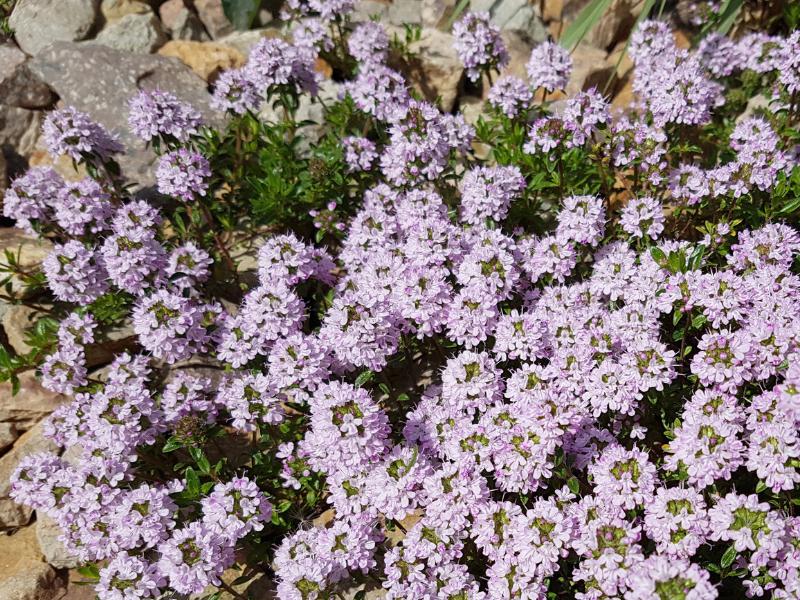
English thyme, also known by its scientific name Thymus vulgaris, is a low-growing creeping shrub with angular, flat, green foliage. This variety also has a sweet aroma and beautiful purple flowers! It also has other names, including common thyme and garden thyme. English thyme thrives in USDA zones 5-9.
8. Doone Valley
Doone Valley is also known as Lemon thyme, but its scientific name is Thymus citriodorus. This plant is a carpet-like, aromatic, evergreen subshrub with a lovely lemon scent. It features petite, dark green leaves that are spherical and edible. During fall and winter, the leaves display gorgeous golden tips.
Several other types of Doone Valley include creeping golden lemon, lime thyme, and silver-edged lemons. They are usually used as seasonings for salads, teas, and spicy foods.
9. “Archer’s Gold” Thyme
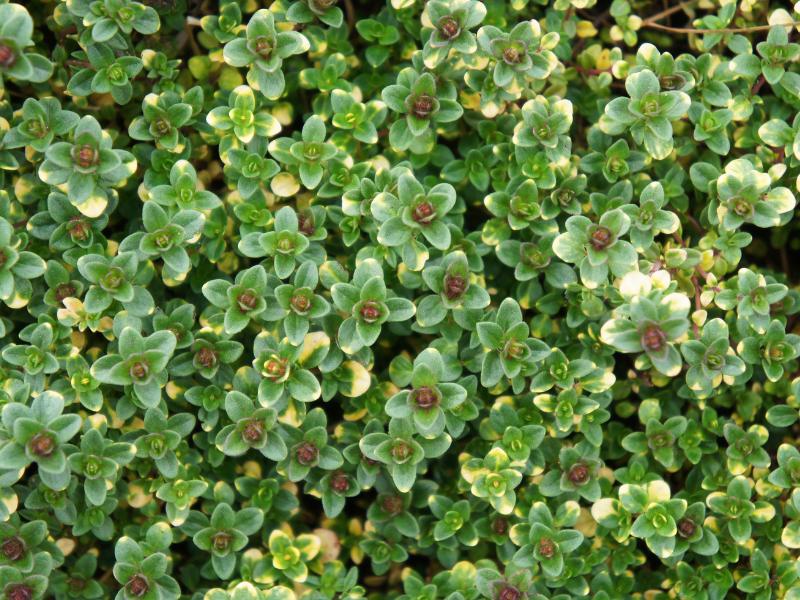
This is a low-growing, carpet-like thyme with golden-yellow-green leaves and pink flowers blooming in the summer. It has a lemon aroma and is commonly used in recipes for fish and chicken.
‘Archers Gold’ thyme is a tall cultivar whose leaves can reach a height of 6-12 inches.
Getting Rid of Creeping Thyme
We all reach a point where we want a new look in our gardens; or a fresh start! Obviously, your renovation process will begin with ground cover.
If you were using creeping thyme as ground cover in your garden, removing it would be troublesome.
Since the plant is not a weed, you can’t employ weed control methods to try and halt its growth.
The best way to go about it is completely removing the plant from the ground. Don’t leave anything behind, even the roots!
FAQ
1. Will other plants be affected by creeping thyme?
Creeping thyme spreads by propagating and sending runners underground. However, it will bypass other plants in the garden and won’t choke them. So the answer is no.
2. Which is the best way to get rid of creeping thyme?
Creeping thyme won’t go away by using weed killers. You’ll just be wasting your time and money.
The best way to kill this plant is to completely dig it from the ground. Remove all the flowers, leaves, stems, shoots, and roots!
Ensure you remove all the roots since there is a high possibility they will grow back again.
3. What are the advantages of creeping thyme?
You can benefit a lot from growing creeping thyme. It can be used as ground cover, which also raises the aesthetics of your home due to the beautiful flowers it blooms.
Creeping thyme also has a pleasant scent, allowing it to be used as a spice in various recipes. Also, its lovely fragrance serves as a garden perfume. So yeah, it’s a win-win situation with this plant!
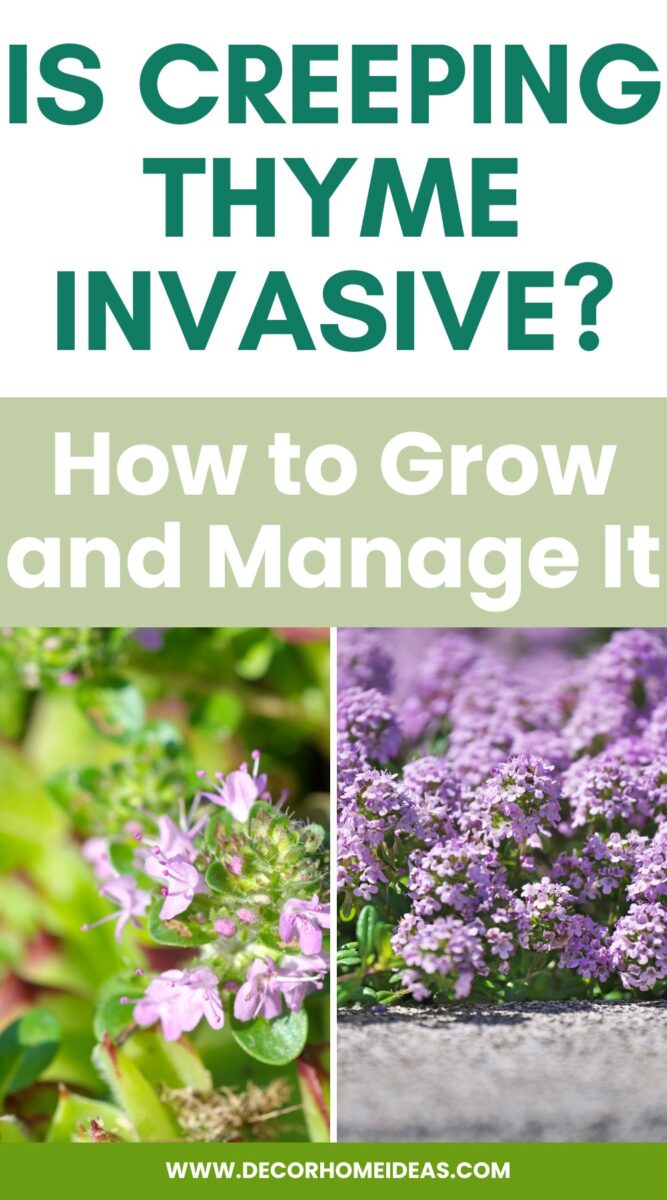
Winding Up
We started this journey to find out if creeping thyme was invasive, and as we have highlighted, the answer is no. Creeping thyme won’t interfere with other plants in your garden, and it will make an excellent ground cover.
Its colorful and scented flowers turn a garden into an aromatic oasis! There are also many different varieties, each with unique flowers that you can choose from to decorate your garden.
Moreover, you can spice up your food with this plant, making it a great addition to your recipes.
Creeping thyme is a hardy, low-maintenance plant that can survive in various conditions. The only thing you have to check on is pruning and watering.
Well, that’s all we have for creeping thyme today. We hope you found it helpful!

